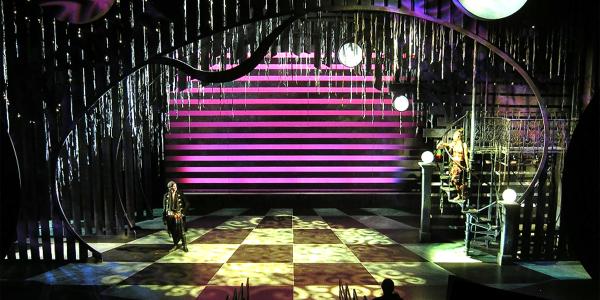Robert Mark Morgan’s new book explores the creative process through the art of scenic design.

What can a lawyer learn about creativity from the art of set design?
In 2015, Washington University's provost at the time, Holden Thorp, began actively encouraging faculty to collaborate across schools and disciplines — for instructors in Arts & Sciences to reach out and talk with faculty in law and business, for example. Robert Mark Morgan, teaching professor of drama in the Performing Arts Department, was fascinated by the idea.
“How are you creative in business? I want to talk to someone in business about that," Morgan recalled thinking at the time. "How are you creative in medicine? People think that doctors aren’t creative! They are supposed to be very ‘by the book,’ but they still have to be creative.”
These questions were at the front of Morgan’s mind while writing his new book, The Art of Scenic Design: A Practical Guide to the Creative Process (Bloomsbury 2022). Morgan wanted to write a book about set design in theatre that would frame his lessons on set design as a greater meditation on the creative process itself. In The Art of Scenic Design, Morgan writes about embracing risks and failure, revitalizing one’s own childlike confidence, and collaborating effectively.
In talking with colleagues in business and law, Morgan noticed that all the anxieties, obstacles, and creative blocks that exist in surrounding fields existed in his own, as well. With Bruce Lindsey, the E. Desmond Lee Professor for Community Collaboration, he created a course that would explore the obstacles to creative practice called "Designing Creativity," one of 12 such classes for first-year students in the Beyond Boundaries Program at Washington University. Morgan and Lindsey have now taught the class 11 times.

Many of the ideas in The Art of Scenic Design emerged in the process of teaching WashU students from a wide range of fields about creative work. While designing a set for a production of Chekov’s The Seagull, he wanted to illustrate the idea of the world closing in on one of the characters by having trees slide on stage both vertically and horizontally. Morgan achieved his vision by collaborating with the play’s technical director, who thought of utilizing fishing reels to move the trees on fishing lines from the sides. The result was a ‘trapped’ feel for that actor.
In collaborative environments, Morgan says, it is important for people to challenge each other to come up with brilliant solutions.
“This book, in a sense, is not about building models, drawing, or even the techniques and utility of designing,” Morgan said. “It’s about how you collaborate. What you do when you mess up. That’s the design of this book.”
“I would like to think that what students take away from the course — and the book as well — is that you have to take a chance to have any success.” Morgan said. “In a sense, in addition to your studies here, whatever discipline you’re in, even if you think it’s the least creative discipline, creativity is the ‘secret sauce’ to being successful.”





